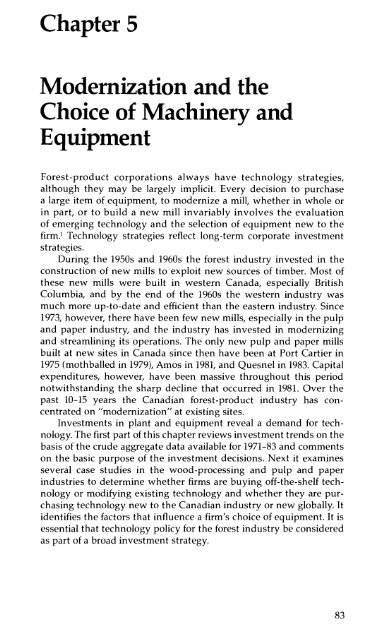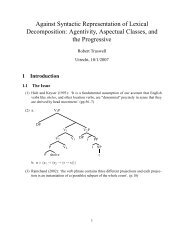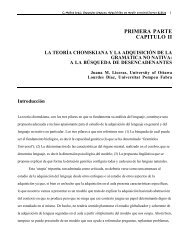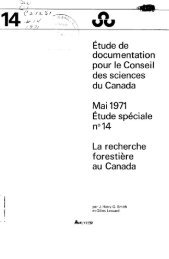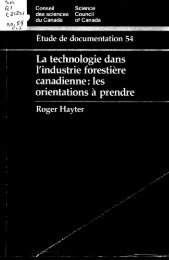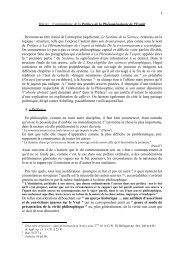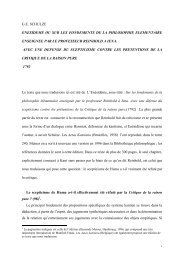Technology and the Canadian Forest-Product Industries ... - ArtSites
Technology and the Canadian Forest-Product Industries ... - ArtSites
Technology and the Canadian Forest-Product Industries ... - ArtSites
You also want an ePaper? Increase the reach of your titles
YUMPU automatically turns print PDFs into web optimized ePapers that Google loves.
Chapter 5Modernization <strong>and</strong> <strong>the</strong>Choice of Machinery <strong>and</strong>Equipment<strong>Forest</strong>-product corporations always have technology strategies,although <strong>the</strong>y may be largely implicit. Every decision to purchasea large item of equipment, to modernize a mill, whe<strong>the</strong>r in whole orin part, or to build a new mill invariably involves <strong>the</strong> evaluationof emerging technology <strong>and</strong> <strong>the</strong> selection of equipment new to <strong>the</strong>firm.' <strong>Technology</strong> strategies reflect long-term corporate investmentstrategies.During <strong>the</strong> 1950s <strong>and</strong> 1960s <strong>the</strong> forest industry invested in <strong>the</strong>construction of new mills to exploit new sources of timber. Most of<strong>the</strong>se new mills were built in western Canada, especially BritishColumbia, <strong>and</strong> by <strong>the</strong> end of <strong>the</strong> 1960s <strong>the</strong> western industry wasmuch more up-to-date <strong>and</strong> efficient than <strong>the</strong> eastern industry. Since1973, however, <strong>the</strong>re have been few new mills, especially in <strong>the</strong> pulp<strong>and</strong> paper industry, <strong>and</strong> <strong>the</strong> industry has invested in modernizing<strong>and</strong> streamlining its operations. The only new pulp <strong>and</strong> paper millsbuilt at new sites in Canada since <strong>the</strong>n have been at Port Cartier in1975 (mothballed in 1979), Amos in 1981, <strong>and</strong> Quesnel in 1983. Capitalexpenditures, however, have been massive throughout this periodnotwithst<strong>and</strong>ing <strong>the</strong> sharp decline that occurred in 1981. Over <strong>the</strong>past 10-15 years <strong>the</strong> <strong>Canadian</strong> forest-product industry has concentratedon "modernization" at existing sites.Investments in plant <strong>and</strong> equipment reveal a dem<strong>and</strong> for technology.The first part of this chapter reviews investment trends on <strong>the</strong>basis of <strong>the</strong> crude aggregate data available for 1971-83 <strong>and</strong> commentson <strong>the</strong> basic purpose of <strong>the</strong> investment decisions. Next it examinesseveral case studies in <strong>the</strong> wood-processing <strong>and</strong> pulp <strong>and</strong> paperindustries to determine whe<strong>the</strong>r firms are buying off-<strong>the</strong>-shelf technologyor modifying existing technology <strong>and</strong> whe<strong>the</strong>r <strong>the</strong>y are purchasingtechnology new to <strong>the</strong> <strong>Canadian</strong> industry or new globally. Itidentifies <strong>the</strong> factors that influence a firm's choice of equipment. It isessential that technology policy for <strong>the</strong> forest industry be consideredas part of a broad investment strategy.83


